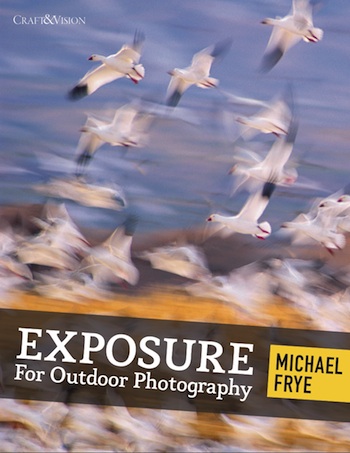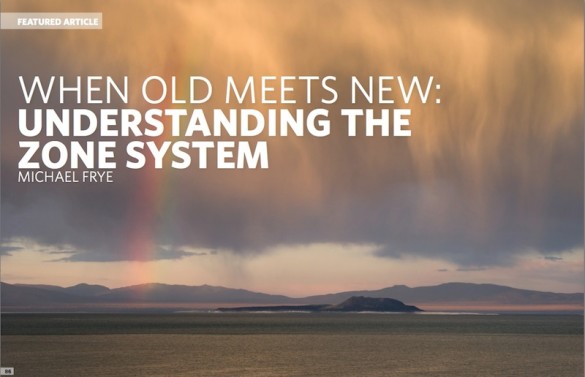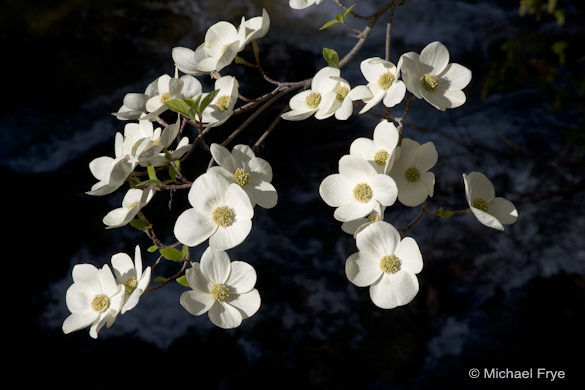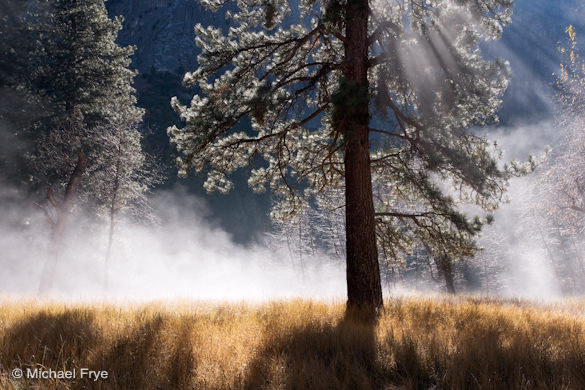by Michael Frye | Nov 15, 2014 | Announcements

I know many of you have already purchased my ebook Exposure for Outdoor Photography, which I greatly appreciate – thank you so much!
If you don’t own this ebook yet, now is your chance to get a copy at a great price, because Craft & Vision has just put it on sale. Until midnight on Tuesday, November 18th, the book is half price – only $2.50! No discount code is required.
In this ebook I start with a comprehensive discussion of exposure fundamentals like shutter speed, aperture, ISO, and reading histograms, then go deeper by taking you through ten practical, real-life examples where I’ve used these basic principles to control the exposure, the sharpness, and the photograph’s message.
The examples go from easy to complex, and include using a histogram to find the right exposure, controlling depth of field, freezing and blurring motion, when to push the ISO, spot metering and the Zone System, and HDR and exposure blending. I also include several exercises to help improve your technique. It’s a concise, easy to understand, yet comprehensive course in mastering the most important skill in photography.
Again, no discount code is required – you just have to place your order before midnight on Tuesday. Click here to order your copy!
— Michael Frye
Related Posts: New eBook: Exposure for Outdoor Photography; My New eBook is Now Available!; Digital Photography Basics: Reading Histograms
Michael Frye is a professional photographer specializing in landscapes and nature. He is the author or principal photographer of The Photographer’s Guide to Yosemite, Yosemite Meditations, Yosemite Meditations for Women, Yosemite Meditations for Adventurers, and Digital Landscape Photography: In the Footsteps of Ansel Adams and the Great Masters. He has also written three eBooks: Light & Land: Landscapes in the Digital Darkroom, Exposure for Outdoor Photography, and Landscapes in Lightroom 5: The Essential Step-by-Step Guide. Michael has written numerous magazine articles on the art and technique of photography, and his images have been published in over thirty countries around the world. Michael has lived either in or near Yosemite National Park since 1983, currently residing just outside the park in Mariposa, California.
by Michael Frye | Aug 7, 2013 | Advanced Techniques, Announcements

The summer issue of Photograph, Craft & Vision’s quarterly magazine, just came out today, and it includes a new article I wrote called “When Old Meets New: Understanding the Zone System.”
Digital Photography today gives us tremendous control over image contrast, but even with all this control, we’re still missing the answers to some basic questions: What is my camera’s real dynamic range? Will this scene fit within that range? If so, how do I determine the right exposure? When do I need to bracket exposures and use HDR?
Luckily, the Zone System give us a framework for answering these questions. I’ve written about the Zone System before, but in this new article I dive even further into how the Zone System relates to digital photography, and how it can answer those questions about image contrast. I include instructions for how you can test your camera’s true, usable dynamic range, how you can use this knowledge to make better exposures in the field, and how you can apply the Zone System to the digital darkroom.
(more…)
by Michael Frye | Feb 16, 2012 | Announcements, Photography Tips

Exposure for Outdoor Photogoraphy
I’m pleased to announce the release of my second ebook: Exposure for Outdoor Photography.
In photography, creativity and technical skill are both essential. It’s great to have a wonderful eye and imagination, but no one will appreciate your genius if your images are washed out and blurry.
The most essential technical skill a photographer must master is exposure. On the surface, exposure seems easy. It’s simply a matter of making the image bright enough—not too dark, and not too light. But the endless variety of light makes exposure challenging. No two situations are the same, so there can be no exact formula for getting the right exposure. On the other hand, exposure doesn’t need to be overly complicated. The fundamental controls—shutter speed, aperture, ISO, light meters—are easy to understand.
Previously on this blog I’ve written about some of these fundamentals, like reading histograms and adjusting exposure. In this ebook I start with a more comprehensive discussion of these essentials, then go deeper by taking you through ten practical, real-life examples where I’ve used these basic principles to control the exposure, the sharpness, and the photograph’s message.
The examples go from easy to complex, and include using a histogram to find the right exposure, controlling depth of field, freezing and blurring motion, when to push the ISO, spot metering and the Zone System, and HDR and exposure blending. I also include several exercises to help improve your technique. It’s a concise, easy to understand, yet comprehensive course in mastering the most important skill in photography.
Like all Craft & Vision ebooks, Exposure for Outdoor Photography is normally only five dollars. But for the next four days you can get it for only four dollars. Just use the code EXPOSURE4 at checkout. Or use the code EXPOSURE20 to get 20 percent off if you buy five or more Craft & Vision ebooks—including my previous volume, Light & Land: Landscapes in the Digital Darkroom.
Exposure for Outdoor Photography is temporarily unavailable. Stay tuned for updates on a revised version.
—Michael Frye
Related Posts: Light & Land eBook Available Today!; Digital Photography Basics: Reading Histograms; Digital Photography Basics: Adjusting Exposure
Michael Frye is a professional photographer specializing in landscapes and nature. He is the author and photographer of The Photographer’s Guide to Yosemite, Yosemite Meditations, and Digital Landscape Photography: In the Footsteps of Ansel Adams and the Great Masters, plus the eBook Light & Land: Landscapes in the Digital Darkroom. He has written numerous magazine articles on the art and technique of photography, and his images have been published in over thirty countries around the world. Michael has lived either in or near Yosemite National Park since 1983, currently residing just outside the park in Mariposa, California.
by Michael Frye | Apr 7, 2011 | Digital Photography Basics, Photography Tips

Most camera's light meters would read the dark areas in the background and overexpose these dogwood blossoms. To correct for this, you need to either override the meter with exposure compensation, or adjust the exposure manually.
In the first part of this series I explained one of the most fundamental aspects of digital photography: reading histograms. In this edition I’ll delve into the next step: how to adjust the exposure when the histogram doesn’t look right the first time.
(more…)
by Michael Frye | Feb 3, 2011 | Digital Photography Basics, Photography Tips

Understanding how to read a histogram is the best way to judge exposure in high-contrast scenes like this.
With film, exposure always involves some guesswork—you can never be sure you made the correct exposure until you develop the film. But with digital cameras you can tell immediately whether the right amount of light reached the sensor by looking at a histogram. This ability to instantly evaluate exposure is a game changer—the single biggest advantage of digital photography over film.
But many photographers are still guessing about exposure because they’re unable to decipher the histogram’s cryptic messages. Instead they judge exposure by how bright the image looks on their camera’s LCD screen. But while those little screens are extremely useful for many things, evaluating exposure isn’t one of them. There are too many variables: screen quality (usually bad), the LCD brightness setting in the camera, and the amount of ambient light.
(more…)












